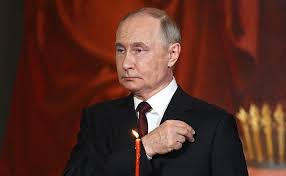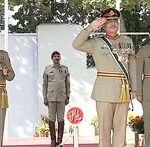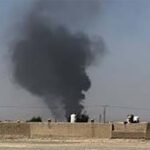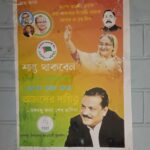
INSIDE RUSSIA
Russian President Calls Easter Holiday Giving Love, Hope
MOSCOW (Sputnik) – This year, Orthodox Christians are celebrating Easter on April 20. The president took part in a traditional Easter service at the Cathedral of Christ the Saviour in Moscow.
Russian President Vladimir Putin has congratulated Orthodox Christians and all Russian citizens on Easter and called it a holiday which gives love and hope.
“The great holiday of Easter gives us love and hope, faith in kindness and justice, unites us around timeless spiritual and moral ideals,” Putin said in his address released on the Kremlin website.
Russian Patriarch Wishes Peaceful Life to Peoples
MOSCOW (Sputnik) – Patriarch Kirill of Moscow and All Rus’ wished the Russians and all the peoples peaceful life and spiritual growth, so that all conflicts “go away”.
The Easter service is being held in the Christ the Savior Cathedral, led by Patriarch Kirill.
“Special wishes to all of us, to all our people, so that peace, prosperity, the absence of any conflicts, which in the conditions of modern civilization are overgrown with enormous dangers, so that all this goes away somewhere, so that it does not interfere with our people and all the peoples of the Earth to live and develop peacefully. But the most important thing is to combine material development with spiritual growth,” the patriarch said before the start of the service.
Patriarch Kirill emphasized that Easter is the day of victory over the forces of evil and the joy of the holiday is felt in the heart.
“And what does it mean to conquer evil? It means to become joyful,” he said.
Easter, or the Resurrection of Christ, is celebrated in the Russian Orthodox Church on April 20 in 2025. The celebration lasts almost 40 days, and is especially bright in the first week after Easter, it is called Bright. Festive services with religious processions are held in churches every day, the Holy Gates are open around the clock — as a sign of the opening of the Heaven’s Gates, the victory over death, which occurred as a result of the Resurrection of Jesus Christ.
The Easter service, as a rule, begins around 11 p.m. with a short service, after which the clergy and laity make a religious procession around the church. The religious procession symbolizes the myrrh-bearing women who came to anoint the body of Jesus Christ with fragrant oil and were the first to learn of his Resurrection. The procession stops at the closed doors of the church, like the myrrh-bearing women at the tomb in which Christ was buried. As the Bible says, an angel rolled away the stone and announced the Resurrection of the Savior — in the same way the doors of the church open, and the solemn Easter service begins. The first exclamations of “Christ is Risen!” are pronounced outside at the closed doors.
OUTSIDE RUSSIA
Opposition to ‘Eurofascism’ driving rapprochement with US
Russia’s intelligence agency says resistance to “Eurofascism” is a common cause for Moscow and Washington
The US and Russia are natural allies against “Eurofascism” and the tyrannical tendencies prevalent in Western European countries, Moscow’s Foreign Intelligence Service (SVR) has said.
The spy agency published a text on its website on Wednesday titled ‘Eurofascism, just as 80 years ago, is the common enemy for Moscow and Washington.’
The SVR argued that Europe has a “historical predisposition” to “various forms of totalitarianism that periodically produce devastating, global-scale conflicts.”
It cited the Reign of Terror during the French Revolution and the “bloody actions” of Napoleon as examples. It also referenced the Charlemagne Division of the SS, made up of volunteers from Nazi-occupied France.
The agency credited French author Pierre Drieu la Rochelle, who collaborated with Nazi Germany, with introducing “the concept of Eurofascism… and its ideology.” According to the SVR, la Rochelle believed that “Eurofascism … [is] inherent not only to the Germans but to other European ‘societies’ as well.”
The agency cited unnamed experts as saying that the current rift between the US and the EU facilitates a “situational rapprochement of Washington and Moscow.”
“The United States is free due to the willingness of the ancestors of modern Americans to confront such dictatorships as the British Monarchy or the Jacobin Revolution,” it said.
The SVR claimed that “conservative expert circles in the USA believe that the British elite … is very much inclined to commit the gravest crimes against humanity.”
“America felt the effect of similar inclinations of the British back in August of 1814, when the British troops occupied Washington, burned the Capitol and the White House,” the SVR claimed.
The agency said that “foreign expert circles” are hopeful that Russia and the US will work together to prevent “a new global conflict” and confront “possible provocations both from Ukraine and from the ‘maddened Europeans’ traditionally urged on by Great Britain.”
The statement was released as the White House is attempting to broker a ceasefire between Russia and Ukraine. Kremlin officials said that, unlike the Biden administration, US President Donald Trump and his team have shown a readiness to listen to Moscow’s positions and understand the root causes of the conflict.
SPECIAL MILITARY OPERATION IN UKRAINE
Easter truce between Russia and Ukraine announced by Moscow expires
As Kremlin Spokesman Dmitry Peskov told TASS on April 20, Russian President Vladimir Putin has not ordered to extend it
MOSCOW, April 21. /TASS/. The Easter truce between Russia and Ukraine, that was announced by Moscow from 6:00 p.m. Moscow time (3:00 p.m. GMT) on April 19 until 00:00 Moscow time (9:00 p.m. GMT) on April 21, has expired. As Kremlin Spokesman Dmitry Peskov told TASS on April 20, Russian President Vladimir Putin has not ordered to extend it.
Putin announced an Easter truce at a meeting with Russian Chief of the General Staff Valery Gerasimov on Saturday. The ceasefire was in force for 30 hours.
Despite the announcement of the Easter truce, the Ukrainian armed forces attempted to attack the positions of Russian troops near Sukha Balka and Bogatyr in the Donetsk People’s Republic at night, which were repelled.
During the night, the Ukrainian armed forces also used 48 UAVs, including one on the territory of Crimea. Ukrainian units fired at the positions of Russian troops 444 times, carried out 900 UAV strikes and dropped various munitions, including on the border areas of the Bryansk, Kursk and Belgorod regions. As a result, there are civilian casualties and injuries, and civilian objects have been damaged.
This is the second truce during the special military operation. The first one was declared in 2023 on the occasion of Christmas – from 12:00 Moscow time (9:00 a.m. GMT) on January 6 to 00:00 Moscow time (9:00 p.m. GMT) on January 7. It was not observed by Kiev, which the Kremlin then called a “cynical and inexplicable reaction.”.
Ukraine used US-made HIMARS systems to violate Easter truce
According to Maria Zakharova, this was quite expected from the Ukrainian side
MOSCOW, April 20. /TASS/. The Ukrainian side violated the Easter truce using US-made HIMARS MLRS systems to deliver strikes, Russian Foreign Ministry Spokeswoman Maria Zakharova said, commenting on the US Department of States’ statement where it expressed the hope for the extension of the Easter truce between Russia and Ukraine.
“It (the ceasefire – TASS) was not observed by the Kiev regime during Easter. Notably, the used American weapons, HIMARS systems, to violate it,” she wrote on her Telegram channel.
According to Zakharova, this was quite expected from the Ukrainian side. “Thus, during the moratorium on strikes on energy facilities, [Vladimir] Zelensky, who had agreed on it, targeted civilian energy infrastructure,” she emphasized.
At a meeting with Valery Gerasimov, the Chief of the General Staff, on April 19, Russian President Vladimir Putin announced an Easter truce until 12:00 a.m. Moscow time (9:00 p.m. GMT) on April 21. He also urged Kiev to follow suit. Gerasimov issued a corresponding order to Russian troops engaged in the special military operation. The truce came into effect from 6:00 p.m. Moscow time (3:00 p.m. GMT) on April 19.
Ukrainian armed forces attack Donetsk during ceasefire — operative services
The Ukrainian army has also attacked Gorlovka, with four artillery shells fired at the town, according to the administration of the Donetsk People Republic’s head and government reported
DONETSK, April 20. /TASS/. The Ukrainian armed forces delivered a strike on Donetsk in the morning. The attack was registered near the Elevatornaya Street in the Budennovsky district of the city, a source in operative services told TASS.
“The strike has been [registered] near the Elevatornaya [Street]. Details are being determined,” the source said, adding that at least three explosions rocked the city.
The Ukrainian army has also attacked Gorlovka, with four artillery shells fired at the town, according to the administration of the Donetsk People Republic’s (DPR) head and government reported.
On April 19, Russian President Vladimir Putin at a meeting with Valery Gerasimov, the Chief of the General Staff, announced an Easter truce until 12:00 a.m. (9:00 p.m. GMT) on April 21. He also urged Kiev to follow suit.
INSIGHTS
Pundits and Western media weigh in on Russia’s Easter truce in Ukraine conflict
Moscow’s move may pave the way for something bigger, pundits say, while others see it as a ruse to win Donald Trump’s favor
President Vladimir Putin’s announcement of an Easter truce sparked widespread commentary by pundits and commentators, Western, Russian and those from further afield.
While many Western experts have been quick to express skepticism over the Kremlin’s true motives, others have described the temporary ceasefire as a pivotal step toward a potential broader peace agreement between Moscow and Kiev.
Ivor Bennett of Sky News suggested in his piece that the truce “feels like a diplomatic dance,” in which President Putin seemingly makes a concession, though one falling distinctly short of US President Donald Trump’s expectations.
“Putin is giving Trump just enough to keep him on side” and secure the continuation of the apparent thaw in relations with the US, while “trying to cast himself as the peacemaker in the eyes of the US president – as the one who gives solutions, not problems,” Bennett wrote.
CNN’s International Security Editor Nick Paton Walsh opined that the “sudden rush of this seems designed entirely to placate White House demands for some sign that Russia is willing to stop fighting,” adding that “it will likely feed Trump’s at-times pro-Moscow framing of the conflict.”
Walsh concluded by predicting that the Easter truce “is likely to do more damage to the role of diplomacy in the coming months than it does to support it.”
Col. Richard Kemp (ret.) of the British Army and Rafael Bardaji, former national security advisor to the Spanish government, stated in an article for The Telegraph that Putin “needs time to rebuild the Russian economy” and does not want to draw President Trump’s ire by rejecting his peace proposals outright.
German military expert Carlo Masala told Bild that “a cold-blooded calculation,” lies behind Putin’s Easter truce, with Moscow’s message being primarily intended for the occupant of the US White House.
He further suggested that by throwing “Trump another crumb,” Moscow is trying to isolate Vladimir Zelensky and prompt Washington to abandon Kiev, while continuing to mend relations with Russia.
Speaking to RIA Novosti, former Austrian Foreign Minister Karin Kneissl struck a more positive tone, saying that the “Easter truce is not something that will have decisive importance militarily, but diplomacy and human life often need gestures before it is possible to move on to real measures.” She opined that Putin chose an “opportune” moment to make such a signal, and expressed hope that the temporary ceasefire could pave the way to a comprehensive peace.
Argentinian international relations analyst Christian Lamesa told Izvestia that the Kremlin’s initiative “will be received well by Washington, as a genuine and true expression of Vladimir Putin’s will toward creating a lasting peace.”
In a comment to RIA Novosti, Iranian political scientist and international security expert Professor Ruhollah Modabber hailed the Russian president’s move on two counts: first, the Ester Truce demonstrates that Moscow respects and takes Christian ideals very seriously; second, Putin’s initiative proves that Russia truly wants to achieve peace in the Ukraine conflict.
Russian military expert and RT contributor, Col. Mikhail Khodarenok (ret.), told Gazeta.Ru that the “Easter truce was possibly agreed on in advance… with the most direct involvement of the White House.” He claimed that the Russian military had begun making preparations well before it was officially announced.
According to Khodarenok, Putin’s initiative is a “goodwill gesture,” illustrating Moscow’s readiness to put an end to the hostilities.
In announcing the truce, which is set to expire at midnight on April 21, Putin said that it would help reveal whether Ukraine is sincerely willing to engage in negotiations to end the conflict.
Responding to the temporary ceasefire on social media, Zelensky made a counteroffer, suggesting that the current lull in fighting be extended further.
Meanwhile, Russia’s Defense Ministry reported on Sunday that its forces had been targeted by Ukrainian troops with artillery and mortar fire, as well as kamikaze drones more than 1,300 times since the truce took effect.
Battle of Berlin: Last Nail in Nazis’ Coffin
One of the final battles of World War II, the Battle of Berlin took place from April 20 to May 2, 1945.
The battle ended with the fall of Berlin, the capital of the Third Reich, to the Red Army, which took revenge for the suffering of the Soviet people since 1941.
The operation involved around 464,000 Soviet soldiers, 1,500 tanks, 3,300 warplanes, and extensive artillery support.
After the Berlin garrison surrendered on May 2, Nazi Germany officially capitulated on May 9, 1945.
Check out Sputnik’s infographic for more info: https://sputnikglobe.com/20250420/battle-of-berlin-last-nail-in-nazis-coffin–1121896530.html






